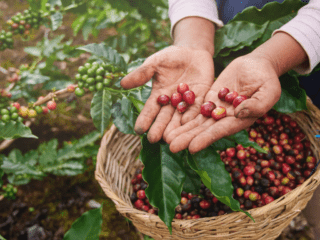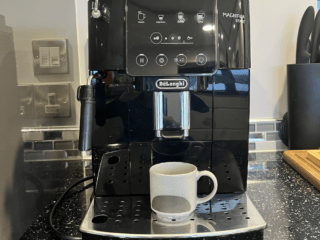Best Coffee for Automatic Bean to Cup Machine
You have invested in a new bean-to-cup coffee machine. Now you are ready to give it a whirl and start enjoying coffee like never before. But what coffee should you be using? What is the best coffee for an automatic coffee machine and what things do you need to consider? We delve into the world of automatic bean to cup machines and discover what you should be looking for in the perfect coffee bean for your machine.
Use Whole Beans
While some automatic coffee machines will come with both a bean grinder and a compartment for pre-ground coffee, using whole coffee beans and grinding them just before brewing can result in a fresher and more flavourful cup of coffee.
Whole bean coffee offers coffee enthusiasts a distinct and elevated brewing experience. Unlike pre-ground coffee, whole beans retain their optimal freshness and flavor because they only begin to release oils and aromas when ground just before brewing. This preservation of essential oils ensures a more nuanced and robust cup of coffee, as the beans’ flavour compounds are protected from oxidation.
Choosing whole beans also provides greater flexibility in adjusting the grind size, allowing coffee connoisseurs to tailor the extraction process to their specific brewing method, be it a French press, pour-over, or espresso machine. The tactile act of grinding the beans further enhances the sensory ritual of preparing coffee, releasing enticing aromas and engaging the senses in a way that pre-ground coffee often cannot replicate.
Whole bean coffee embodies a commitment to freshness and flavor, making it an ideal choice for your automatic coffee machine.

The Delonghi Magnifica Start ECAM222.20.B, Automatic Coffee Machine has a pre-ground coffee compartment but we always use whole beans for a better flavour.
Roast level
You have decided to use whole beans, now you need to choose what roast profile you require. Medium roast coffee beans are often a good choice for automatic machines. They strike a balance between the rich flavors of dark roasts and the acidity of light roasts.
Medium roast coffee beans are characterized by a balanced profile that combines the best of both worlds – the nuanced flavours of lighter roasts and the rich, full-bodied notes of darker roasts. These beans undergo roasting to a moderate level, striking a perfect harmony between acidity and sweetness. As a result, medium roast coffees often showcase a versatile array of tasting notes, ranging from mild fruity and floral undertones to subtle hints of chocolate and nuts.
The roasting process allows for the preservation of the beans’ unique origin characteristics, making medium roasts an excellent choice for those who appreciate the distinct flavors derived from coffee-growing regions. With a well-rounded and approachable flavor profile, medium roast coffee beans cater to a broad audience, appealing to both casual coffee drinkers and connoisseurs seeking a delightful and versatile daily brew.
Arabica vs. Robusta
Arabica beans are known for their smooth and mild flavour, while Robusta beans are more robust and can have a stronger, sometimes bitter taste. Many people prefer a blend of both for a well-rounded flavour.
Arabica and Robusta are the two primary species of coffee beans, each contributing distinct qualities to the world of coffee. Arabica, often regarded as the more refined and premium option, is prized for its smooth, mild flavor profile, lower acidity, and aromatic nuances that can include floral, fruity, and sometimes even wine-like notes. Additionally, Arabica beans contain less caffeine compared to Robusta.
On the other hand, Robusta beans are known for their robust and bold flavour, higher caffeine content, and often exhibit a more bitter and earthy taste. Robusta’s resilience to pests and diseases makes it hardier and easier to cultivate in diverse climates.
The choice between Arabica and Robusta coffee beans ultimately depends on personal taste preferences, with Arabica appealing to those who favour a more delicate and nuanced coffee experience. At the same time, Robusta caters to those seeking a bolder and stronger cup. Many blends combine both varieties to achieve a balanced and well-rounded flavor profile.
Brand and Origin
Experiment with different brands and coffee origins to find the ones that match your taste preferences. Ethiopian, Colombian, and Brazilian coffees are popular choices.
Oil Content
Look for beans with a medium level of oiliness. Too much oil can lead to clogging in some automatic machines.
Blends vs. Single Origin
Some people prefer single-origin beans for their distinct flavor profiles, while blends can offer a more balanced and consistent taste.
Grind Size
Make sure to use a grind size that is suitable for your specific automatic coffee machine. Check the manufacturer’s recommendations for the ideal grind.
Freshness
Opt for recently roasted coffee beans to ensure maximum freshness and flavor. Check the roast date on the packaging.
It’s important to note that personal preferences play a significant role in determining the best coffee beans for your automatic bean to cup machine. Consider trying different varieties and brands to discover the ones that suit your taste buds and work well with your specific automatic coffee machine.




